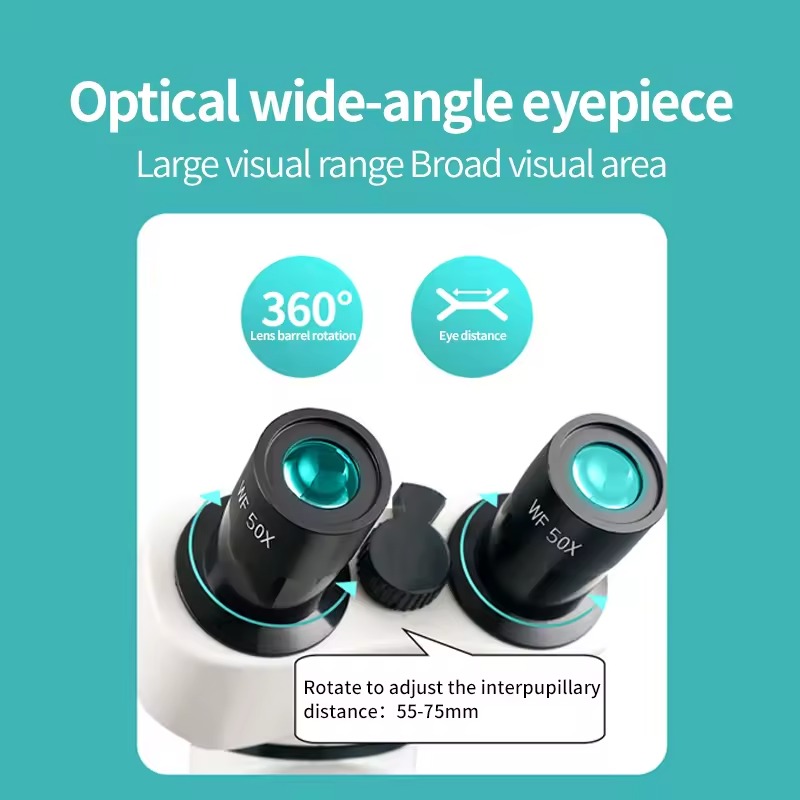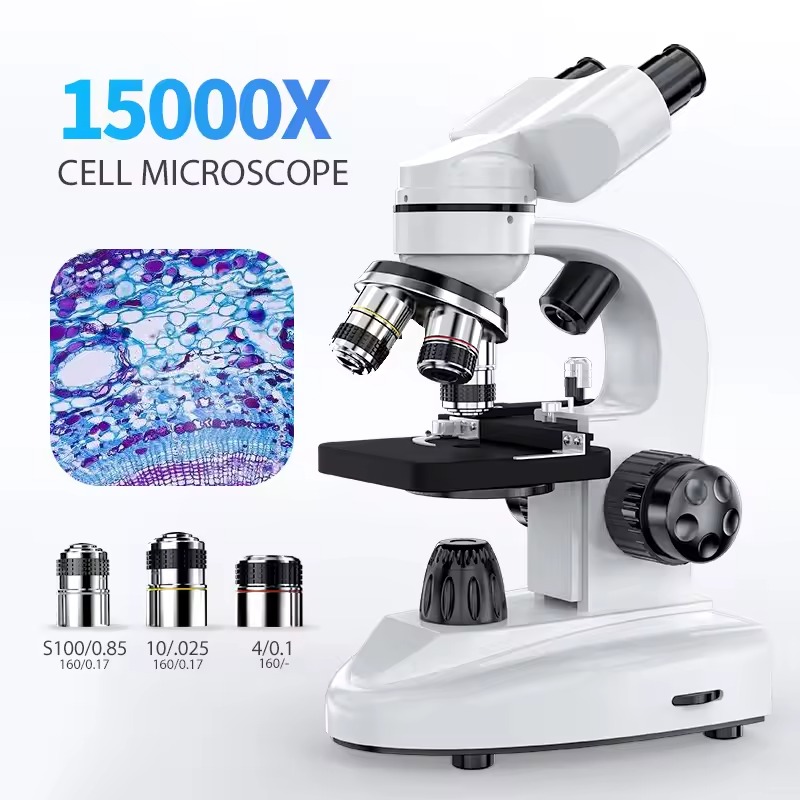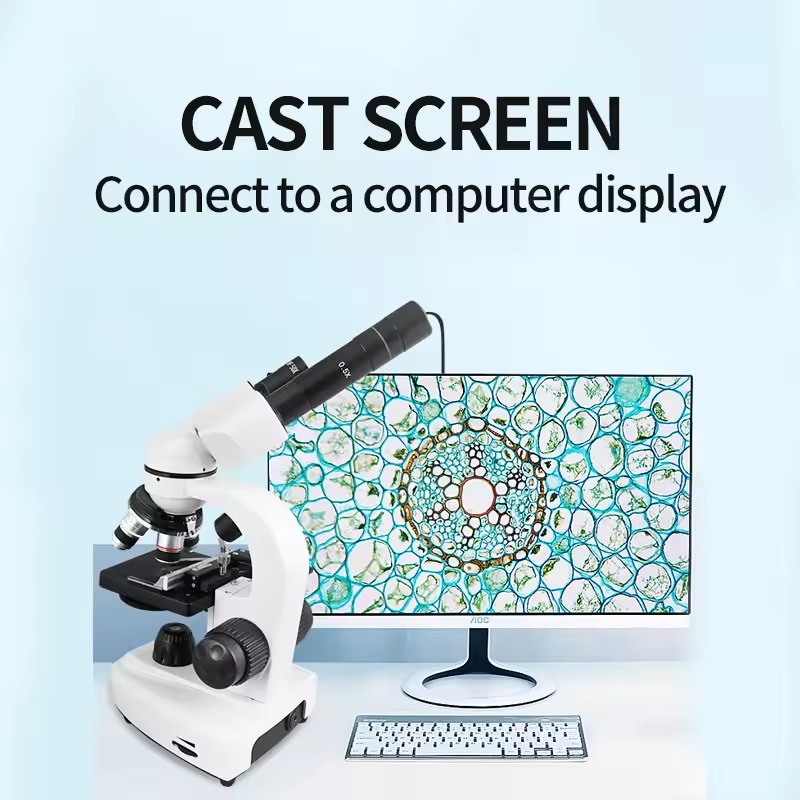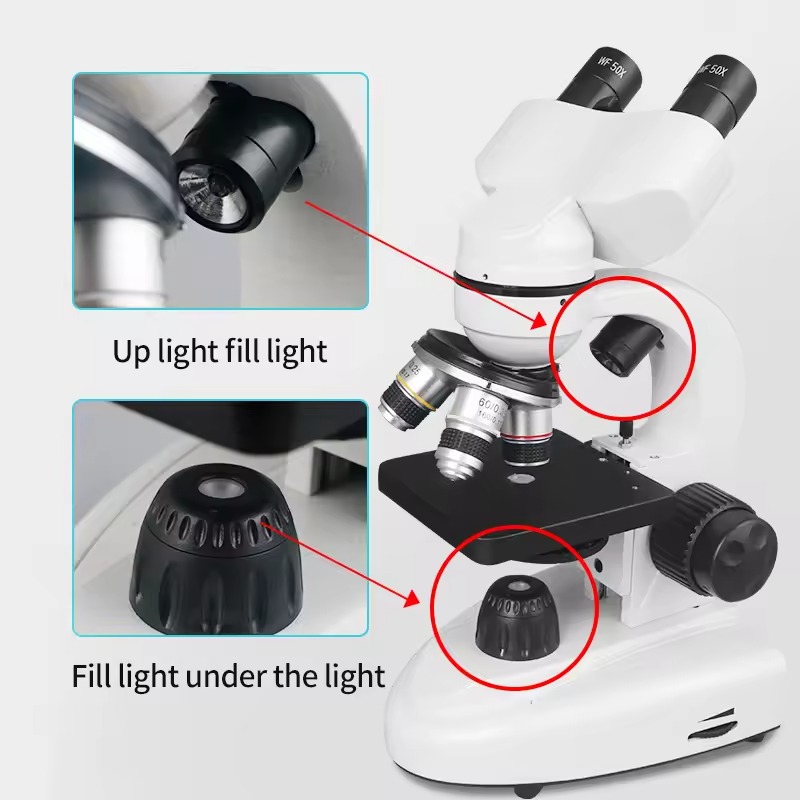Introduction to Microscope
Microscopy stands as a cornerstone in science. It opens a world unseen to the naked eye. This guide embarks on a journey into the realm of the very small. We’ll explore what a microscope is and its role in modern science.
Microscopes are tools. They magnify tiny objects, allowing us to observe details otherwise invisible. From cells to atoms, they unveil the mysteries of the minute. As a pivotal instrument, they fuel discoveries across diverse fields.
This guide in 2025 looks forward. We embrace the latest developments reshaping microscopy. Through this lens, let’s delve deeper into the exciting world beneath our sight. Microscopy’s reach is vast, touching on medical breakthroughs, material innovations, and ecological insights.
Stay tuned as we dive into the types of microscopes. Each type has unique features suited for specific tasks. Understanding these differences is key to mastering microscopy’s potential. Gear up for a micro-level adventure that’s both enlightening and inspiring.

Types of Microscope
When discussing what is a microscope and its applications, it’s vital to understand the various types available. Microscopes can be broadly categorized into optical microscopes, electron microscopes, and scanning probe microscopes. Each comes with its own set of capabilities and is used for different purposes.
Optical Microscopes
Optical microscopes, the most common type, employ light to magnify objects. They can range from simple designs with a single lens to complex systems with multiple lenses. These microscopes are typically used in schools, biology labs, and for any application where samples are visible to the naked eye but details are too small to see without magnification. Their magnification typically goes up to 1000x.
Electron Microscopes
Electron microscopes, on the other hand, use beams of electrons to create an image. They offer much higher resolutions than optical microscopes, going up to two million times magnification. These microscopes are essential in fields like materials science and nanotechnology, where they help researchers see atoms and molecules.
Scanning Probe Microscopes
Scanning probe microscopes stand apart by not using light or electrons. Instead, they scan surfaces with a physical probe. This group includes Atomic Force Microscopes (AFM) and Scanning Tunneling Microscopes (STM), which can create images of surfaces at the atomic level. These are pivotal in studying surface properties and are widely used in physics and chemistry.
Each type of microscope has been refined over time to cater to specific needs of various scientific communities. Understanding their differences is crucial for scientists when choosing the right tool for their research.
Key Components of a Microscope
Discovering what makes up a microscope is key to using it effectively.
Lenses and Magnification
Lenses are the heart of a microscope. They bend light to magnify the object you are viewing. Without good lenses, a microscope cannot perform its job. Typical microscopes use convex lenses. These lenses bring the light rays together, making the object look bigger. The objective lens does the primary magnification. The eyepiece lens then magnifies this image further. Together, they determine the overall magnification power. Basic school microscopes can magnify up to 1000 times. Advanced scientific microscopes go even higher.
Light Sources and Imaging
Light is essential for seeing the sample. In optical microscopes, it shines from below or above to illuminate the specimen. The quality of the light source affects the clarity of the image. LEDs are common because they last long and provide steady light. Some microscopes have mirrors instead. They reflect natural light to the specimen.
Electron microscopes, however, do not use light. They make images with electron beams. This gives much clearer pictures, down to the atomic level.
Stage and Focusing Mechanisms
The stage is where you place the sample. It needs to be stable and adjustable. Stages typically have clips to hold the slides in place. Focusing mechanisms let you adjust the clarity of the image. Coarse adjustments help you get close to the right focus. Fine adjustments are for perfecting the image. Good focusing is critical for making good use of the microscope’s potential.

Innovations in Microscope for 2025
The year 2025 has brought remarkable innovations to the world of microscopy. With these advancements, researchers can now delve deeper into the micro-world with greater precision and ease. Let’s explore the significant breakthroughs that are setting a new frontier for microscopic exploration.
Advancements in Imaging Techniques
Breakthrough imaging techniques have elevated microscopy to new heights. High-resolution imaging is now more sophisticated, capturing finer details than ever before. Fluorescence microscopy has evolved, allowing for clearer views of cellular processes. This results in crisp, highly detailed images essential for scientific discovery. Cryo-electron microscopy has also made leaps forward, letting us observe biological specimens at near-atomic resolution without ice crystal damage.
Automation and AI Integration
Automation now plays a pivotal role in microscopy. It speeds up processes and reduces human error. Artificial intelligence (AI) has been integrated to enhance image analysis. AI algorithms can now identify patterns and anomalies, improving research outcomes. This fusion of AI with microscopy is paving the way for faster, more accurate scientific studies.
Portable and Miniature Microscope
Portability in microscopy has transformed its accessibility. Lightweight, compact microscope designs are now available, making them easy to use in various settings. Field researchers can take these portable microscopes to remote locations, extending their research capabilities. Miniature microscopes also allow for in vivo studies, permitting scientists to observe living organisms in natural or controlled environments without disturbance. The reduced size does not compromise quality, maintaining high-resolution output.
These innovations are not just expanding the capabilities of researchers but also bringing microscopy into new realms of possibility. Through these advancements, the future of microscopy is bright and promises to propel scientific inquiry to unprecedented levels.
Using Microscopes in Various Fields
Microscopes have pushed the boundaries of research in numerous disciplines. Let’s explore how they are vital across diverse fields.
Microscopy in Medical Research
In medical research, microscopes are key. They let us see cells and tissues up close. This helps in diagnosing diseases. Doctors can spot abnormal cells quickly with them. Researchers also use them to watch how cells react to treatments.
Medical breakthroughs often start with a microscope. They are essential in fields like pathology and genetics. By using microscopes, we understand diseases better. This leads to new cures and better health care.
Microscopy in Material Science
Material scientists rely on microscopes too. They use them to look at metals, ceramics, and polymers. This helps in developing new materials. It’s how we make stronger, lighter, and more durable products.
Electron microscopes are especially useful here. They show the atomic structure of materials. This reveals how different conditions affect them. Researchers can then tweak materials for desired properties.
Microscopy in Environmental Studies
Finally, environmental studies benefit from microscopes. They help in examining air and water samples. Scientists can identify pollutants and their sources.
Microscopes also aid in studying soil and plant health. We can see how environmental changes affect ecosystems. This is crucial for conservation efforts and understanding climate change.
In each field, microscopes unlock details that are invisible to the naked eye. They are powerful tools that drive science forward.
The Future of Microscope
Microscopy, a powerful tool in scientific discovery, is poised for an exciting future. Advancements are expected in various technological aspects that will enhance its potential exponentially.
Predictions and Upcoming Technologies
The future of microscopy is teeming with potential. Upcoming technologies aim to deliver exceptional detail down to the molecular level with greater ease of use:
- Enhanced Resolution: New techniques promise resolutions beyond the current limits, allowing for even more detailed images.
- 3D Imaging: Advancements in 3D imaging will enable scientists to view objects in a three-dimensional space, providing a more comprehensive understanding of structures.
- Integration of Quantum Technology: Quantum microscopy, a field still in its infancy, could transform our ability to see the unseen by exploiting quantum phenomena.
- Augmented Reality (AR) Microscopes: AR microscopes will likely allow users to interact with the microscopic world in a more intuitive and immersive way.
Each prediction carries the promise of making microscopes even more indispensable tools in research and education.

Challenges and Potential Solutions
However, with innovation comes challenges:
- Data Management: The enormous amount of data from advanced imaging techniques necessitates better storage and analysis solutions.
- Cost of Technology: Cutting-edge microscopes are expensive, hence finding cost-effective ways to develop these technologies will be key.
- Accessibility and Training: As microscopes become more complex, ensuring they are accessible and that users are well-trained is essential.
Potential solutions include developing cloud-based storage for data, grants and funding for acquiring high-end microscopes, and comprehensive training programs for education and research communities.
By foreseeing future challenges and working on viable solutions today, the microscopy community can ensure that the field continues to thrive and contribute to many more scientific breakthroughs.
Care and Maintenance of Microscope
A well-maintained microscope is key to its performance and longevity. Proper care and upkeep ensure that every component works optimally. This section covers essential steps for cleaning and calibrating your microscope, along with tips on storage and handling.
Cleaning and Calibration
For microscopes to function at their best, regular cleaning and calibration are crucial.
- Cleaning Lenses: Use lens paper or a soft, lint-free cloth. Gently wipe lenses to remove dust and oil.
- Cleaning Body: Wipe the microscope’s body with a damp cloth. Avoid harsh chemicals that might damage the finish.
- Calibration: Check and adjust the microscope’s alignment regularly. Follow the manufacturer’s guidelines for calibration to ensure accuracy.
Handle each part with care to avoid misalignment or damage. Moreover, check that the light source and lenses are free of debris for the clearest images.
Storage and Handling Precautions
How you store and handle your microscope can affect its condition.
- Cover When Not in Use: Store the microscope under a dust cover to keep it clean.
- Safe Transportation: When moving the microscope, hold it by the base and the arm. Keep it upright to prevent parts from shifting.
- Temperature Control: Avoid extreme temperatures. Sudden changes can cause condensation and damage sensitive components.
- Avoid Moisture: Keep the microscope in a dry place. Moisture can lead to mold growth, especially on lenses.
By following these simple steps, you can help extend your microscope’s life and ensure it is ready for precise work whenever you need it. Regular maintenance not only serves the tool but also enhances the quality of your research and observations.
Conclusion and the Role of Microscope in Science and Technology
Microscopy is a driving force in scientific progress. It gives us views of the unseen world. The discoveries and developments it fuels are countless. Clearly, microscopes are not just tools but gateways to knowledge.
Microscopes allow us to see the tiny building blocks of life. They help us fight diseases, create new materials, and preserve our environment. In education, they are crucial. Learning about microscopic worlds inspires students. It pushes them to ask questions and seek answers.
The future of microscopy looks bright. New technologies promise even deeper insights. But we must tackle data and cost challenges. Training is essential. Users need to keep up with fast-moving advances.
Caring for microscopes is thus important. It keeps them ready for important work. Cleaning, calibration, and proper storage are key practices. They ensure accurate results and extend the life of the microscope.
In short, microscopes shape our understanding of the world. They are vital in many fields. We must nurture their development and usage. By doing so, we support a future of endless discovery.
